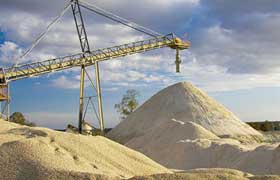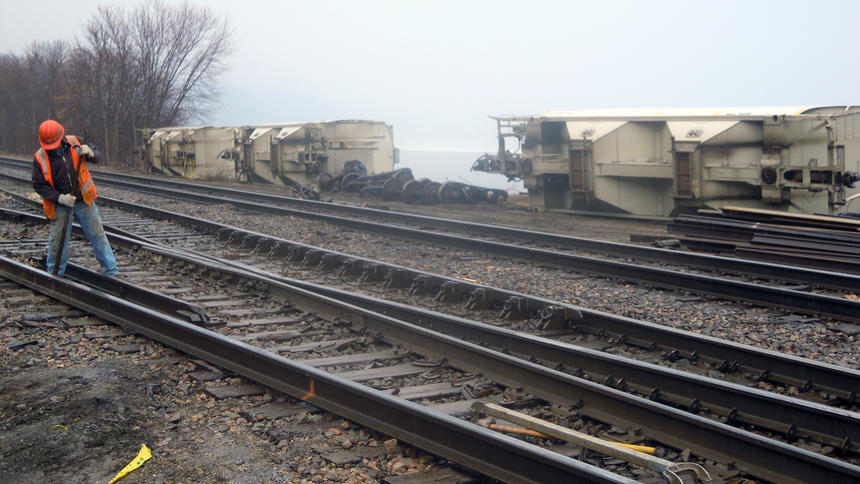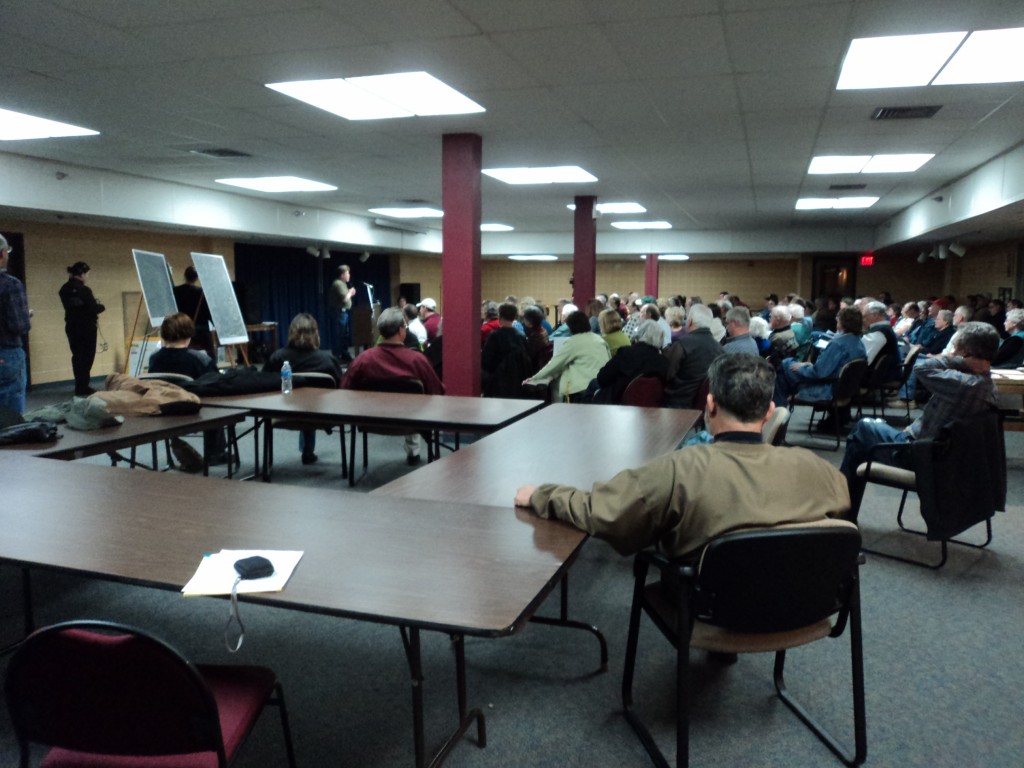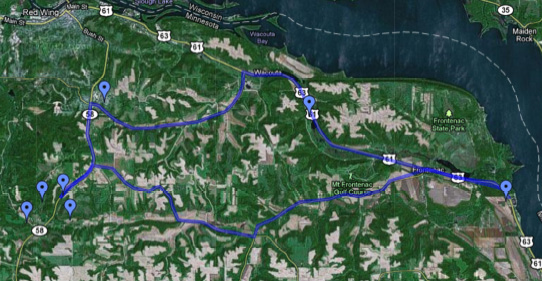Sand – UNEP’s report
May 7th, 2019

Here in Red Wing, and throughout southeast Minnesota, and along the other side of the river in Wisconsin, sand has been a major issue. Many communities were dragged into this issue when an epidemic of silica sand mines, processing, and transloading facilities sprang up to support fracking for oil. Sand interests got Red Wing’s Mayor ejected when he was both Mayor and Executive Director of sand mining industry’s Minnesota Industrial Sand Council:
Sand was also an issue as Minnesota attempt at, though I’d say avoided, developing sand mining rules:
Someone explain rulemaking to the MPCA
As to sand as a resource, that’s not really been a part of the discussion in these parts. And on that note, the United Nations Environmental Programme (UNEP) has released a report:
And in the STrib: UN environment agency warns of effects of rising sand use
Check it out!
GreenMark & Wacouta Township in Goodhue Co. District Court
September 12th, 2017

I found my notes!! On August 29, 2017, Alan and I went to the Goodhue County Courthouse for the GreenMark Solar v. Wacouta Township (Court Case No. 25-CV-17-1462) festivities — a Summary Judgment hearing.
FULL DISCLOSURE: I’m not a fan of any of the principals of GreenMark, Mark Andrew, Dennis Egan, and Julie Jorgensen. Mark Andrew is a former Hennepin County Commissioner and a fan of burning garbage. Here’s a thread from the Mpls yak-yak list about Andrew when he was running for Mayor. Dennis Egan, well, we had a few go rounds when he was Mayor of Red Wing AND was executive director of Minnesota Industrial Sand Council, and at the time silica sand mining issue was on agenda for City of Red Wing. Julie Jorgensen? Her Excelsior Energy Mesaba Project coal gasification plant took up 5 years of my full-time labor before it went to part-time and intermittent, and still just won’t fully go away! Minn. Stat. 216B.1694, Subd. 3(b)(1)(ii).
That said, I’m also a big fan of solar, from way, way back when my father designed the solar on the Minnesota Zoo (that was later taken down, it was hot water! Not quite what was most needed, and they didn’t know much about solar back then).
Here’s the GreenMark Complaint — couldn’t find the Wacouta Answer or the cross-motions for Summary Judgment. The Wacouta Township website is years out of date — what’s up with that? (2014 is most current minutes, plus a notice of the May 2017 meeting about the solar project. ???)
Here are a couple articles:
GreenMark Solar challenges Wacouta Township | Republican Eagle
Minnesota Developer Sues for Solar Garden Permit
The oral argument started with Greenmark. Some points (not all inclusive):
Focus on Minn. Stat. 394.33, Subd. 1, that the township decision violates Town Powers Act. It’s inconsistent with their zoning. They can enact more restrictive zoning, but they didn’t, township has no solar ordinance.2
Township ordinance is ambiguous. Frank’s Nursery case — if ambiguous, allow property owner to do what they want with the property.
“Agricultural community” — Planning Commission and Board selected different definitions. Current use, peat mining and hay. Pollinator scale 45, and 85 with solar. Wetlands. Reduce carbon emissions.
Township argument:
Town Power Act does not restrict township actions. Bergen defines inconsistent, it’s not different.
Township Ordinance, Art. 3, Subd. 10, limits industrial uses that do not support agricultural. Solar is an industrial use. Twp. does allow solar in ag, BUT, it’s more restrictive, and it’s not inconsistnet.
The standard is whether down decision was rational, i.e., legally sufficient, supported by record.
Reasonable — inconsistent with agriculture, exported to the grid. CUP – exported, GreenMark takes issue with def of ag use, but see “Hubbard Broadcasting” denial of Conditional Use. Review is deferential. Mandamus (GreenMark’s action) review not to challenge discretionary decisions of local government.
Frank’s Nursery re: ambiguous ordinance, doesn’t require ordinance to be construed to support use. Court still needs to determine rationality.
Greenmark Rebuttal
Mandamus – this is about building permit, a ministerial act, not discretionary.
Does township even have jurisdiction/authority.
Purpose of project — Goodhue County, that’s the area.
Altenberg (?) – Town Powers Act – Twp didn’t adopt a more restrictive ordinance.
Bergum (?) – legislative intent of Town Powers Act.
Township Rebuttal
Cases of Mandamus for building permits
Goodhue – zoned agricultural, township couldn’t zone industrial, that would be inconsistent with county zoning.
__________________________
Judge Bayley said he has a lot of homework to do, and will do it and issue Order.
TOMORROW – Silica Sand Tech Assistance Team Mtg.
January 4th, 2017
January 5, 2017 – 2:30pm
Silica Sand Technical Assistance Team Meeting
January 5th, 2017 @ 2:30pm in the DNR Central Office Lobby Conference Room.
Meet to discuss technical and agency updates to the EQB Tools to Assist Local Governments in Planning for and Regulating Silica Sand Projects, agency rulemaking updates, and updates on silica sand activities in the State of Minnesota
Conference call: 1-888-742-5095 | Conference Code: 3649223869#
Agenda:
1) Introductions
2) Agency updates on silica sand activities in the State of Minnesota
3) Technical and agency updates to EQB Tools to Assist Local Governments in Planning for and Regulating Silica Sand Projects
4) Agency updates on rulemaking
a. DNR
b. MPCA
c. EQB
5) EQB Ordinance Library
6) Other topics
7) Adjourn
Show up — keep the heat on to get these projects MOVING! It’s been YEARS!
The rulemaking process — nothing changes…
September 13th, 2015
Many thanks to the “little birdie” who brought this decades old report to my attention:
Yes, this is a report from the Minnesota Legislative Auditor from 1993, and if you read it, you’ll see little has changed is so many years… The issues raised are issues we’ve been raising in the Public Utilities Commission rulemaking for Minn. R. Ch. 7849 and 7850 (Certificate of Need and Siting/Routing). AAAAAAAAAAAACK!
For example, from the Summary:
For example, in the PUC Rulemaking for 7849 and 7850 (PUC Docket 12-1246), it’s been an over two-year-long process, and few are showing up anymore. We weigh in, some things are taken into account in the drafts, and then that disappears from the next draft. How can it feel like anything but a colossal waste of time? Yet if we weren’t there, the utilities would get everything they want. And as with the utility Certificate of Need and Siting/Routing processes, rulemaking has the same notice and public participation problems. It’s all the same, deja vu all over again.
… and also from the report …
Does this sound familiar?
So what is the bottom line of this report?
Also, we recommend the following additional changes to the Administrative Procedure Act:
… and …
In addition to changing the APA and other statutes that govern agency rulemaking, we recommend that:
Are they frackin’ insane?
April 21st, 2011
There was a meeting at the Red Wing library Monday night about the rumored fracking sand mine south of Re d Wing, and just north of Hay Creek. By the time the meeting was underway, it was standing room only.
The article from the Red Wing Republican Beagle is down below.
Here’s a post with some details of this project to be:
No frackin’ way!!!
Goodhue County’s Article 14 covers mining, but so far it’s been aggregate, and not silica, and it’s a different process, whole different sort of mining, so my thought is that Article 14 needs some amendments. A ordinance change application is just $500 and some work to draft language…
Here’s a map — the site is on the left, and the transfer station in Florence Twp. is on the right, a railroad spur west of Hwy 61 near Hanson’s Harbor:
Citizens turn out in large numbers against possible Goodhue County sand mine
By: Regan Carstensen, The Republican EagleThey got their 10 people – 10 times over.
Silica sand, as opposed to normal sand, is worth about $1,400 per ton.
For more info on the other end of the process, what they use the sand for (fracking) and to learn about what they’re doing with proppants:
In the New York Times (very interesting to learn that instant coffee is used!!!):
Millions of Gallons of Hazardous Chemicals Injected Into Wells
And here’s how bad it’s gotten in Pennsylvania:
PA DEP, Marcellus Shale Coalition Admit Drilling Wastewater Likely Contamination Drinking Water







